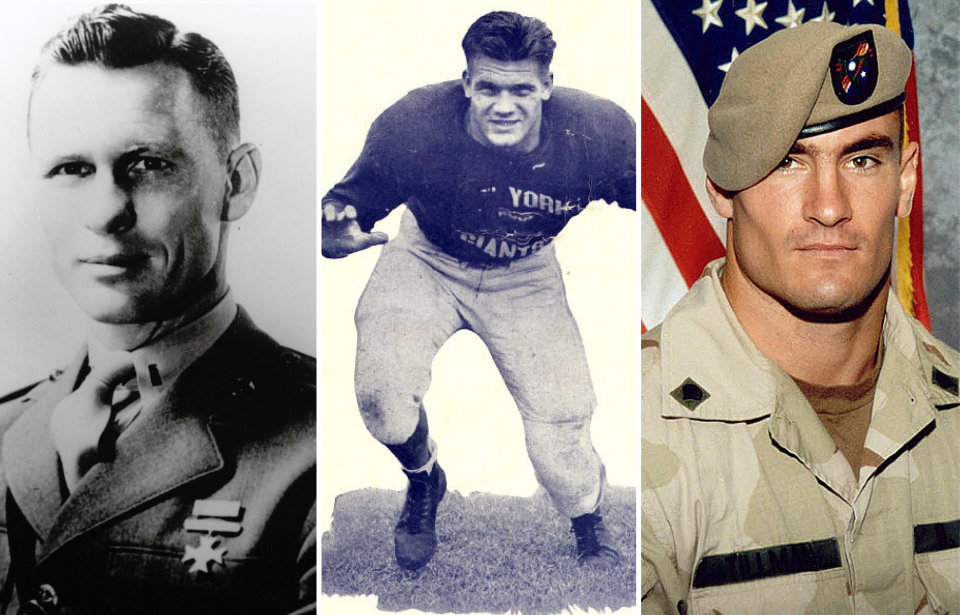Al Blozis
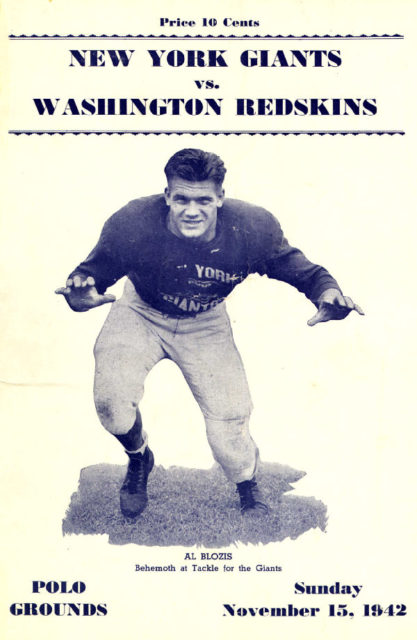
Al Blozis was born in 1919 in Garfield, New Jersey, and from an early age, his extraordinary size set him apart. He excelled in track and field, participating in events like shot put and discus, and his athletic prowess earned him a spot at Georgetown University, where he also played football.
Jack Lummus
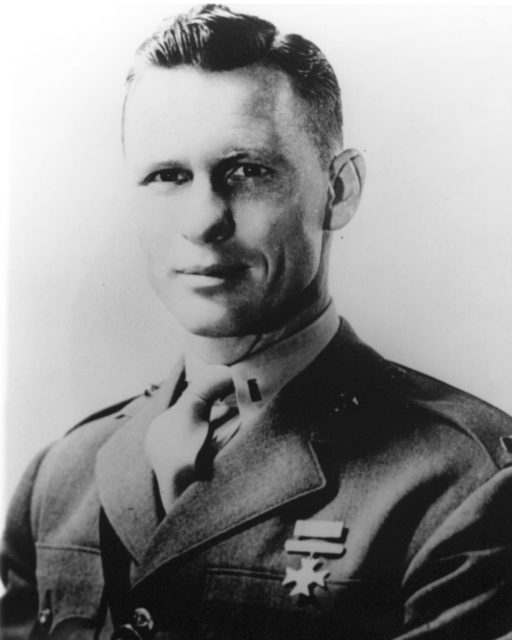
Jack Lummus was born in 1915 in Ellis County, Texas. A standout in both football and track, he earned an athletic scholarship to Baylor University, where he had an All-American college career. After graduating, he joined the New York Giants as a free agent and played in nine games during his rookie season.
When World War II began, Lummus chose service over sports. As soon as the football season ended, he enlisted in the U.S. Marine Corps and was eventually given command of a rifle platoon during the Battle of Iwo Jima.
While leading an assault on enemy positions, Lummus stepped on a land mine, losing both of his legs. Despite the severe injuries, he stayed conscious and encouraged his men to press on. He later died on the operating table. For his bravery and sacrifice, he was posthumously awarded the Medal of Honor.
The football player’s commanding officer wrote in a letter to Lummus’ mother, “Jack suffered very little for he didn’t live long. I saw Jack soon after he was hit. With calmness, serenity and complacency, Jack said, ‘The New York Giants lost a good man.’ We all lost a good man.”
Bob Kalsu
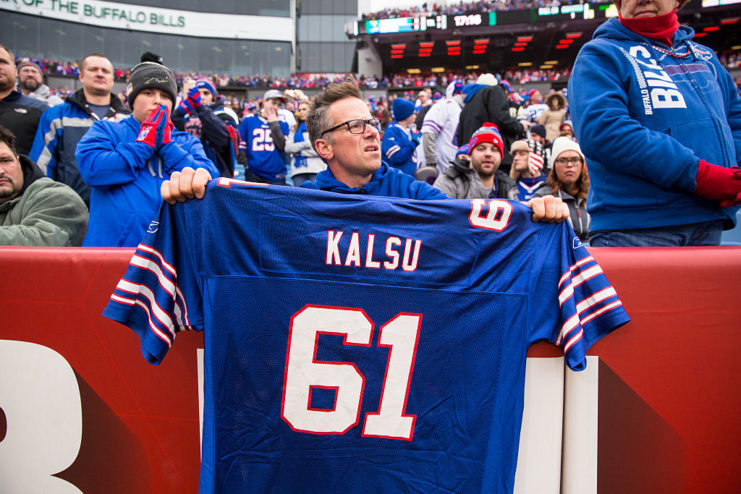
Bob Kalsu was born in Oklahoma City, Oklahoma, and became a standout athlete at the University of Oklahoma. As an offensive tackle, he earned All-American honors in his senior year. After college, he was drafted by the Buffalo Bills and played as a starting guard during the 1968 season.
Instead of accepting an athletic scholarship, Kalsu chose to attend the University of Oklahoma on an ROTC scholarship. After graduating, he joined the U.S. Army to fulfill his service obligation and was assigned to the 101st Airborne Division.
In November 1969, Kalsu was deployed to South Vietnam. Tragically, on July 21, 1970, he was killed during the Battle of Fire Support Base Ripcord when his unit was struck by a mortar attack. Though his professional football career was brief, his sacrifice was honored with a place on the Buffalo Bills Wall of Fame, and Dell City High School in Oklahoma named its football stadium after him.
Don Steinbrunner
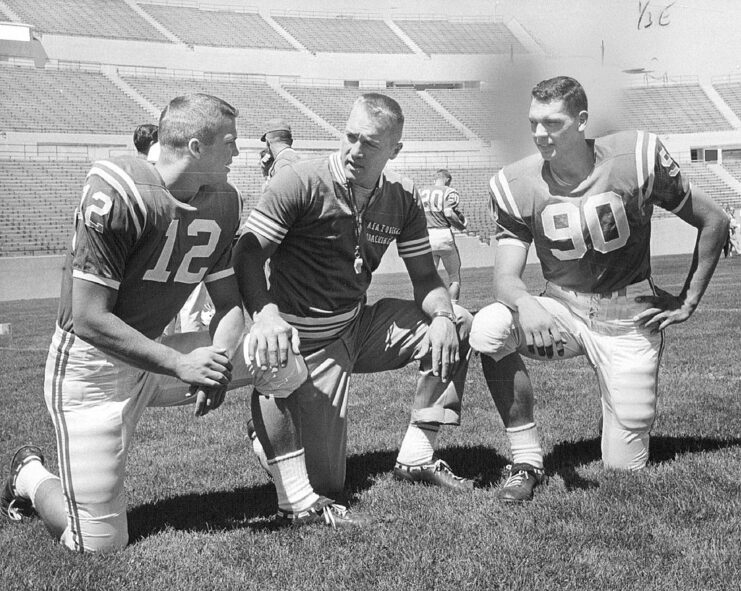
Don Steinbrunner was born in 1932 in Bellingham, Washington. He was a standout athlete in both football and basketball at Washington State College, where he captained both teams. Following his college years, Steinbrunner joined the Cleveland Browns, playing a single season with the team and participating in the 1953 Championship Game, which the Browns lost.
In 1954, Steinbrunner joined the US Air Force to fulfill his ROTC commitments. After a knee injury ended his football career, he chose to stay in the service and spent four years coaching the US Air Force Academy’s football team.
In 1966, during the Vietnam War, Steinbrunner was offered a safe assignment but chose to decline it. In July 1967, the Fairchild C-123 Provider, which he was aboard on a mission to spray Agent Orange, was shot down by enemy small-arms fire, killing Steinbrunner and the other crew members.
Steinbrunner, the first NFL player to die in Vietnam, was posthumously awarded the Purple Heart and the Distinguished Flying Cross.
Pat Tillman
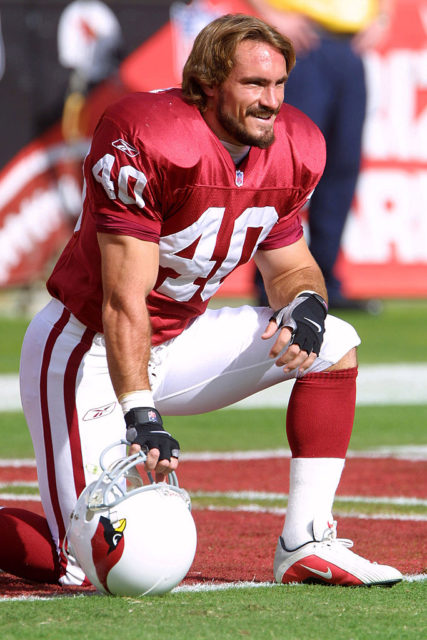
Pat Tillman was a standout athlete from Fremont, California, who made a name for himself at Arizona State before entering the NFL. Drafted in the 7th round by the Arizona Cardinals, he quickly proved his value on the field and earned a spot on Sports Illustrated’s All-Pro team in 2000.
But in the wake of the 9/11 attacks, Tillman made a life-altering decision. Turning down a lucrative contract worth over $1 million per year, he chose to enlist in the U.S. Army alongside his brother. After completing basic training, he served in Iraq during Operation Iraqi Freedom and later earned his place among the elite by graduating from Army Ranger School. He was then deployed to Afghanistan.
On April 22, 2004, Tillman was tragically killed near the village of Sperah. Initial reports claimed he died in a firefight with enemy forces, but it was later revealed that he was the victim of friendly fire. His death marked the first time since the Vietnam War that an active NFL player had been killed in combat, following in the footsteps of Bob Kalsu. Tillman’s legacy endures as a powerful example of sacrifice, conviction, and patriotism.
